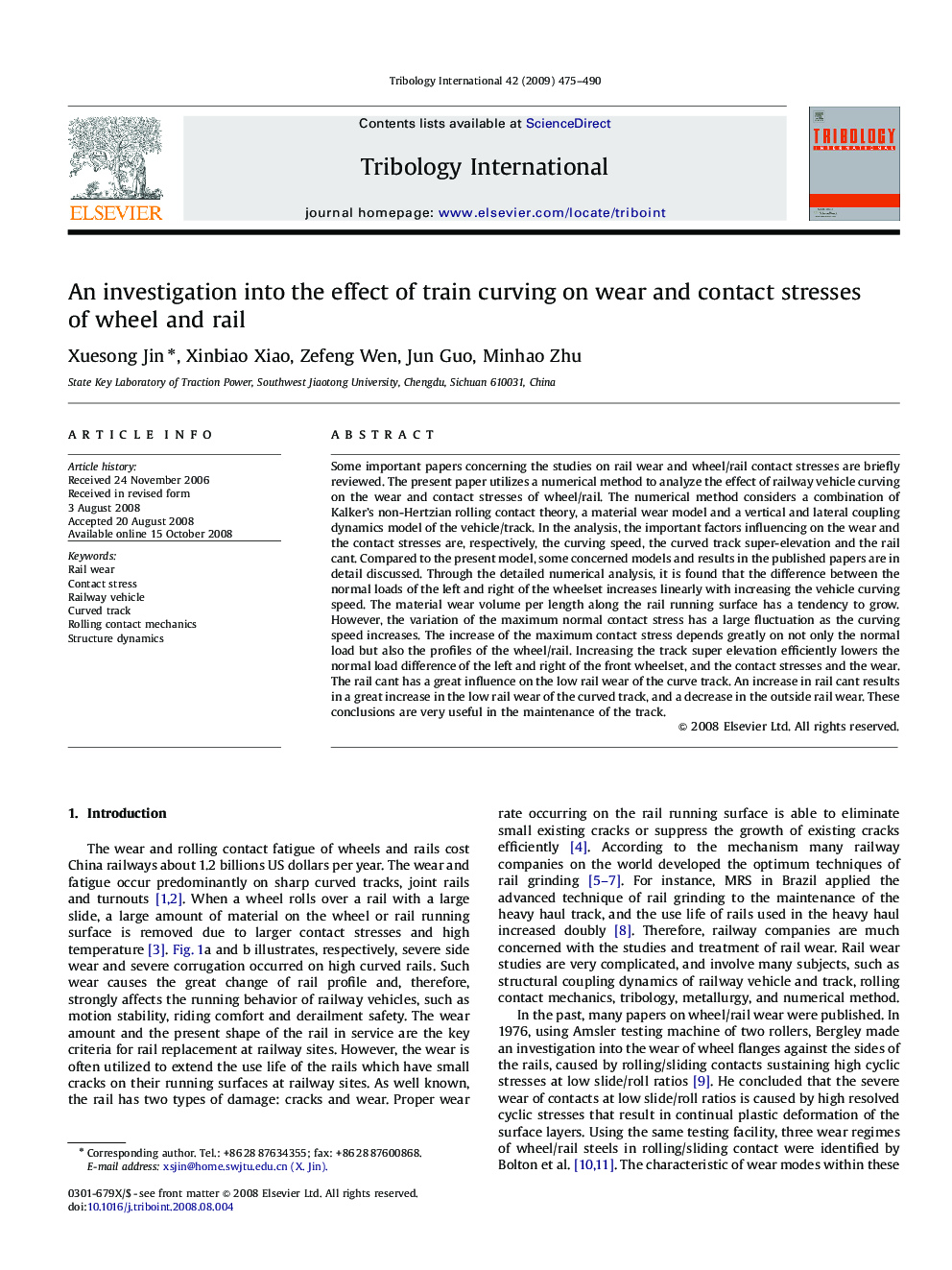| کد مقاله | کد نشریه | سال انتشار | مقاله انگلیسی | نسخه تمام متن |
|---|---|---|---|---|
| 616406 | 881490 | 2009 | 16 صفحه PDF | دانلود رایگان |

Some important papers concerning the studies on rail wear and wheel/rail contact stresses are briefly reviewed. The present paper utilizes a numerical method to analyze the effect of railway vehicle curving on the wear and contact stresses of wheel/rail. The numerical method considers a combination of Kalker's non-Hertzian rolling contact theory, a material wear model and a vertical and lateral coupling dynamics model of the vehicle/track. In the analysis, the important factors influencing on the wear and the contact stresses are, respectively, the curving speed, the curved track super-elevation and the rail cant. Compared to the present model, some concerned models and results in the published papers are in detail discussed. Through the detailed numerical analysis, it is found that the difference between the normal loads of the left and right of the wheelset increases linearly with increasing the vehicle curving speed. The material wear volume per length along the rail running surface has a tendency to grow. However, the variation of the maximum normal contact stress has a large fluctuation as the curving speed increases. The increase of the maximum contact stress depends greatly on not only the normal load but also the profiles of the wheel/rail. Increasing the track super elevation efficiently lowers the normal load difference of the left and right of the front wheelset, and the contact stresses and the wear. The rail cant has a great influence on the low rail wear of the curve track. An increase in rail cant results in a great increase in the low rail wear of the curved track, and a decrease in the outside rail wear. These conclusions are very useful in the maintenance of the track.
Journal: Tribology International - Volume 42, Issue 3, March 2009, Pages 475–490